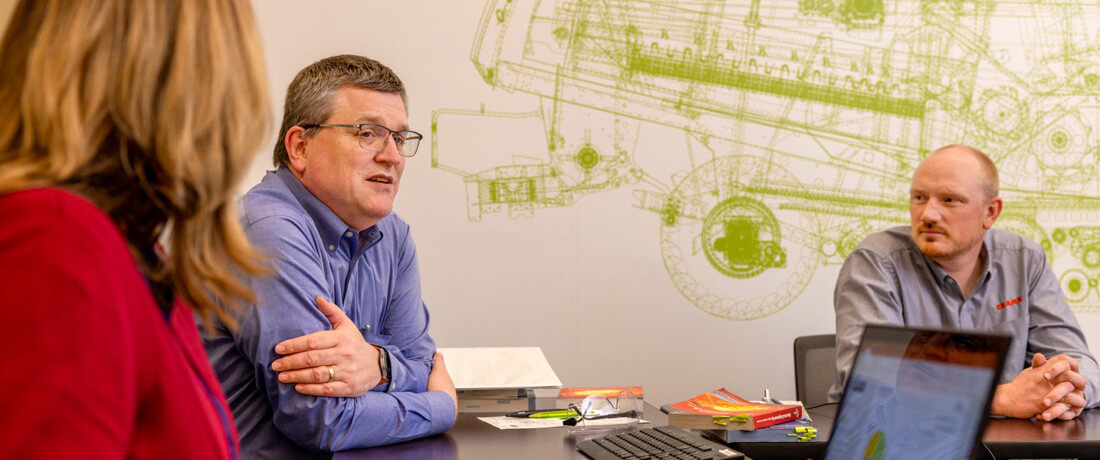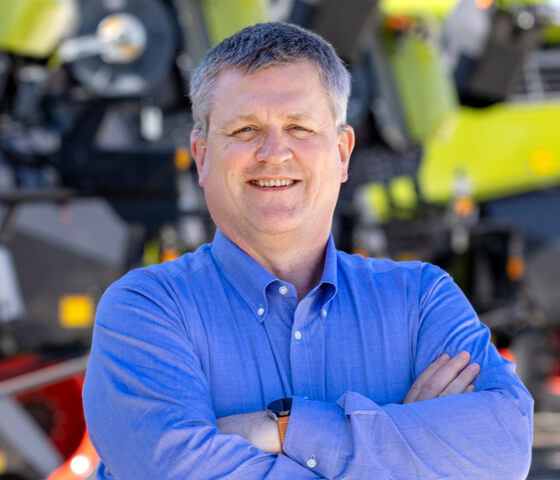
"We want to continue growing in the USA."
Matthias Ristow, Managing Director Business Administration, explains in an interview what's special about the factory in Omaha – and how German and American culture differs.
Mr Ristow, you started working for CLAAS Omaha nine years ago. How has the site evolved in this time?
Since then we have more than doubled our production capacity. In 2016 we were still building 285 machines a year. Now it's over 600. We have further optimised our processes to achieve this. In addition, we have increasingly localised our manufacturing process. In other words, we now purchase far more parts from US suppliers. We have also found outstanding suppliers in countries such as Mexico and India. And our market share in the USA has been steadily increasing ever since.

Matthias Ristow, 57,
is originally from Germany. After gaining his school-leaving certificate there, he went to the USA where he attended high school and university. In 2014 he was appointed Vice President Finance & Operations at CLAAS in Omaha. In 2018 he became Managing Director Business Administration.
Which machines are produced in the factory?
We manufacture models in the 8000, 7000 and 6000 LEXION combine harvesters series. Our machines are essentially the same as those built at the parent factory in Harsewinkel. It's just that our models sometimes have larger grain tanks and attachments because the fields in the USA are generally so much bigger than in Europe. Another thing is that there is much greater demand for the CLAAS TERRA TRAC crawler track here than in Germany: over 60% of the combine harvesters built by us in the USA are equipped with this system – compared with 47% in Europe.
Are there any other aspects that tell you the factory is in the USA?
Yes, in terms of working practices, there are certainly cultural differences between Germans and Americans. While we Germans tend to want to analyse each project down to the last detail before starting, the Americans just want to get going on it straight away. But these approaches complement each other very well in practice. We have also noticed that our American colleagues appreciate working for a German family business – our working environment is particularly highly rated. For example, 18 months ago we purchased ice-cream makers and made Wednesday our Ice Cream Day. This campaign proved so popular that we had to retain it permanently, or we would have had a riot on our hands (laughs).
How does the collaboration between Omaha and the other CLAAS sites work?
Very well. We work very closely with the factories in Harsewinkel, Paderborn and Törökszentmiklós (Hungary) – it runs very smoothly. I have been a member of a global CEO organisation for a number of years now. The other CEOs are always quite envious when I explain how we collaborate with the parent factory in Harsewinkel and how well we coped with the pandemic and supply chain bottlenecks.
How do you see the factory evolving in the coming years?
We want to see continued strong growth and increase our market share in the USA. What's more, we are always thinking about which other products in the CLAAS Group could be produced in Omaha and which parts we could source locally. Of course, it must make good financial sense. Or be strategically important. The fact is, we want to continue growing in Omaha – we've got plenty of space and a good, hungry team!







